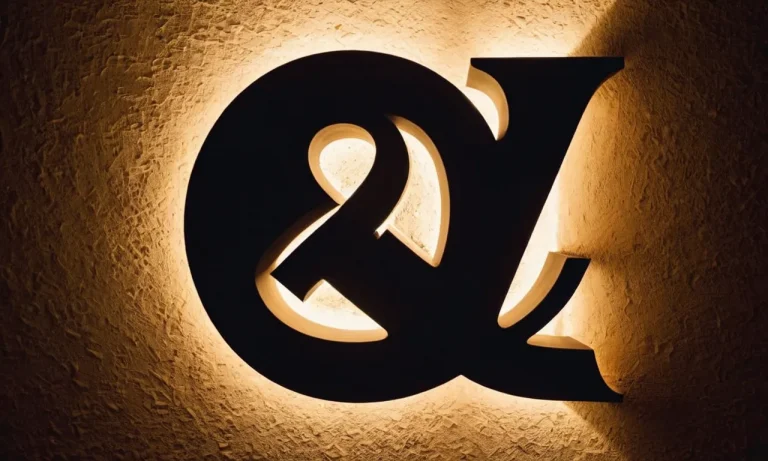The midnight hour has long been associated with mystery, magic, and spiritual transformation. As the clock strikes 12, many feel a palpable shift in the energy around them. Could there be deeper meaning to this intriguing time of night?
Read on as we explore the history, symbolism, and spiritual significance of the bewitching midnight hour.
The History and Folklore of Midnight
Origins of midnight in ancient philosophy and religion
Midnight has long been viewed as a symbolic transition point between one day and the next. In ancient times, midnight marked the middle of the night when mystical and magical things were thought to occur. Many cultural and religious traditions have rituals associated with the stroke of midnight.
Midnight in pagan/occult rituals and practices
Midnight is considered a powerful time in many pagan and occult rituals. Practitioners believe midnight enhances magic and psychic abilities because it lies balanced between the solar and lunar cycles. Historically, witches were said to gather at midnight to conduct magical rituals.
The witching hour and other supernatural associations
The term “witching hour” refers to the time around midnight when supernatural activity is believed to increase. Folklore states that the veil between the spirit world and earth is thinnest at this hour, enabling ghosts and demons to cross over more easily.
Cultural Depictions and Symbolic Meaning
Representation in mythology and literature
The midnight hour has held deep symbolic significance across cultures and mythological traditions. In Ancient Greek myths, midnight marked the arrival of Hecate, goddess of witchcraft and the underworld. Celtic folklore speaks of faerie magic awakening at the bewitching hour.
And in literature from Gothic and Romantic eras, midnight casts an aura of mystery and foreboding.
William Shakespeare famously set the ghost’s appearance to Hamlet at the stroke of twelve, representing a liminal moment “where the voyage of human life borders upon the mysterious country, from whose bourne no traveler returns.”
Here the midnight hour bridges the natural world and otherworldly planes of existence.
The midnight hour as a liminal, transformative space
Anthropologists have characterized midnight as a “liminal” space, standing on the threshold between two phases or states. On the cusp between two days, it is a gap time felt to be ripened with potential.
The temporal properties of midnight also evoke a sense of “time out of time.” Removed from the routines of daylight, the midnight hour takes on a touch of the eternal. In many cultures the night has been viewed as a generative matrix, with midnight specifically seen as an auspicious moment for rituals and rites of spiritual passage.
Death and rebirth at the stroke of twelve
The midnight hour also carries strong resonances of death and regeneration. In myth and lore, midnight is often “the witching hour” or “the devil’s hour” linked with fading vital powers. Yet out of this ending comes new beginning, as midnight heralds the coming dawn.
So too at the turn of the year, midnight on December 31st represents the “death” of the old year giving rise to the new. Staying awake until midnight on New Year’s Eve has become a collective ritual welcoming this renewal and fresh start.
Midnight Symbolism in Spiritual Traditions
Midnight prayers and vigils in Christianity
In Christianity, midnight has held spiritual significance since ancient times. Many monks and nuns observe the monastic tradition of rising at midnight to pray and meditate in solitude. Known as the Vigils, these midnight devotions derive from Psalm 119:62 – “At midnight I will rise to give thanks unto thee.”
Midnight vigils symbolize Jesus’ prayer in the Garden of Gethsemane the night before his crucifixion (Matthew 26:36-46).
Some Christian denominations, like Catholicism, Lutheranism, and Anglicanism, hold midnight mass services on Christmas Eve. The idea is to welcome the birth of Jesus at the same time of night he was born in Bethlehem. Midnight Easter services celebrating Jesus’ resurrection are also observed.
The Islamic tradition of tahajjud salat
In Islam, voluntary midnight prayers called tahajjud salat have great spiritual power. The Qur’an describes the midnight hour as a profoundly peaceful time to connect with Allah: “And in the hours before dawn they would ask Allah’s forgiveness” (Q 51:18).
Performing tahajjud salat during the last third of the night is seen as a time when prayers are more likely to be answered.
The Islamic prophet Muhammad routinely observed midnight vigils and tahajjud prayers. For Muslims who seek a deeper relationship with God, praying tahajjud at midnight emulates Muhammad’s devotion. The spiritual darkness of midnight enhances this devotional practice.
Midnight meditations in Eastern religions
In Hinduism and Buddhism, midnight and early morning hours provide serenity for spiritual practitioners to meditate without worldly distractions. Silence, mental clarity, and closeness to the divine realms make pre-dawn hours profoundly meaningful in Eastern faiths.
Hindu sadhus (ascetics) often begin meditation at midnight, reflecting on Brahman (ultimate reality) to achieve moksha (liberation). Chinese Zen Buddhist monks wake up before dawn to meditate. Similarly, Tibetan Vajrayana monks engage in late-night chants and visualization practices called tukdam.
Across Dharmic religions, the midnight hour resonates with stillness and the sacred liminal space between darkness and dawn. The subtle spiritual energies at this time facilitate a deeper cosmic vision.
Interpreting the Spiritual Significance
A time for reflection and renewed perspective
The stroke of midnight holds deep symbolic meaning across cultures, often seen as a pivotal moment of transition from one day to the next. At the core, midnight invites us to pause and reflect as another 24-hour cycle comes full circle.
It is a chance to review the closing day with clear eyes and an open heart.
Midnight offers the perfect setting to gain renewed perspective. The late hour tends to be quiet and still, with minimal distraction from the outside world. This peace allows our mind to process experiences, emotions, and revelations that may have emerged through the day’s events and interactions.
The clarity of midnight can reveal new understandings, direction, or purpose.
An opportunity to release the old and embrace the new
Beyond reflection, midnight signals an opportunity for emotional and spiritual release. As the new day dawns, we can consciously let go of what no longer serves our highest good – outdated beliefs, toxic relationships, self-limiting attitudes.
This ceremonial release makes space for new positive manifestations to take root in our life.
Spiritual teachers often speak of midnight as a thinning of the veil between worlds. In these potent moments we may receive divine inspiration, creative vision, healing energy, or sacred insight to fuel our purposeful intentions for the coming day.
A moment of heightened intuition and connection
Interestingly, our intuition and receptivity also perk up around midnight. Light dream states and hypnagogic images start dancing as our conscious rational filters relax. This allows our innate heart-wisdom to shine through the usual egoic noise.
The midnight hour also carries a sweet sense of unity and connection – reminding us that we all flow through the same natural cycles and rhythms, governed bysomething greater than our individual selves.
No matter how solitary our midnight journey may seem, others are gazing into the same starry sky with similar longings, questions and awakenings rising within.
Conclusion
Whether you view midnight as a mystical or frightening hour, it undeniably carries great symbolic power. As the time when night transforms into day, it represents a turning point brimming with possibility.
During the midnight hour, we have the chance to reflect, release, renew and rediscover what truly matters most.






